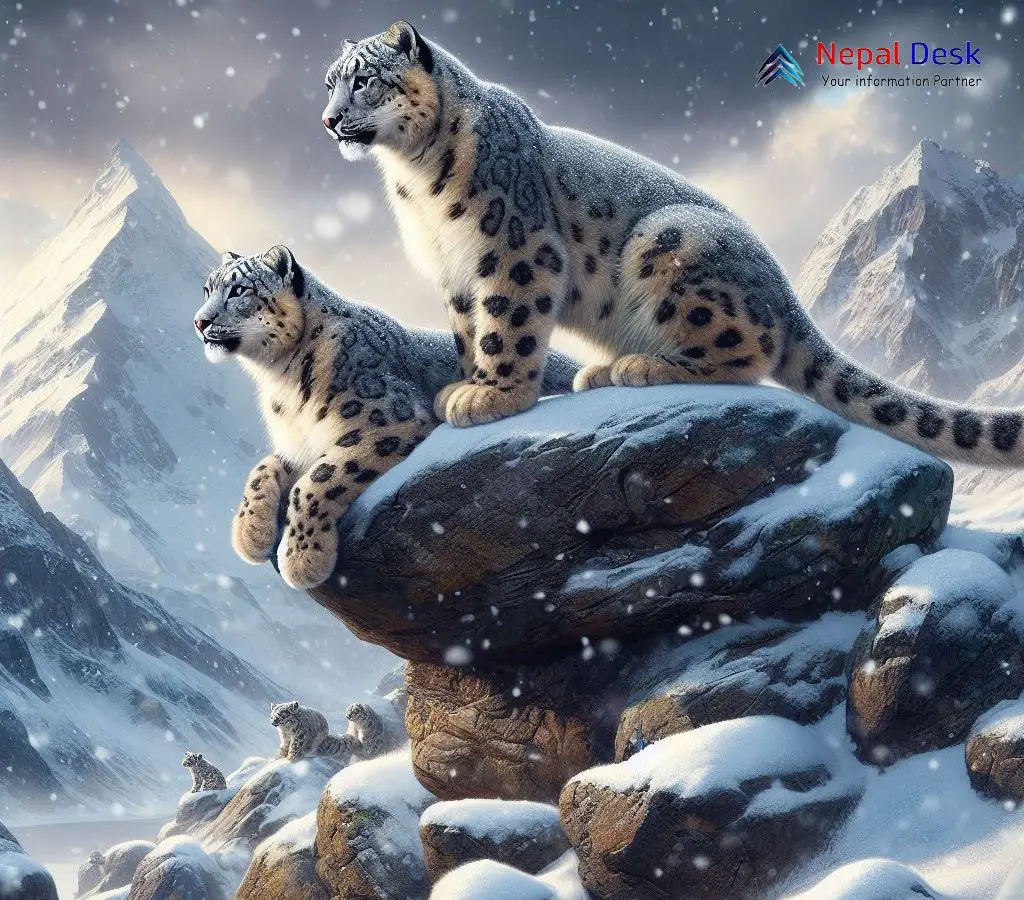Irish Mission: Documenting Snow Leopard Conservation in Nepal
Published Date

Published Date
An Irishman's challenging expedition in Nepal to shed light on snow leopard conservation efforts, climate change impacts, and coexistence solutions.
⏱ 3 min read
An Irishman has embarked on a quest to aid in the conservation of snow leopards in the rapidly melting mountains of Nepal.
Dr. Jonny Hanson was motivated by the endangered species' dire situation and the challenges faced by its native habitat. He physically prepared for this challenging task that will demand a lot of physical fitness by carrying a 25kg backpack up and down the hills for several weeks as his training exercise before embarking on a 12-day snow leopard expedition through the Himalayas.
Throughout a six-mile trek, the Monaghan-born conservationist, who spent his early years in Malawi and now resides in Ballymena, Co Antrim, shared that he is developing a documentary to reveal snow leopard conservation efforts and how climate change affects both these magnificent creatures and the people of Nepal.
The dwindling species inhabits high altitudes, and as per WWF, serves as a vital indicator of climate crisis impacts. Snow leopards are already on the brink of extinction with an estimated 2,710 to 3,386 mature adults remaining in the wild (IUCN Redlist). Factors contributing to their decline include habitat loss, poaching, reduced natural prey populations, and retaliatory killings by humans.
The climate crisis now presents the most significant long-term danger to snow leopards' existence as it damages their habitat and diminishes freshwater resources in their environment. Global warming could potentially eliminate up to 30% of their Himalayan habitat due to melting glaciers.
Dr. Hanson's documentary will focus on snow leopard conservation initiatives and explore potential future scenarios for both the species and local communities that share its mountainous habitat.
He explained that their short film will trace the history of snow leopard conservation efforts: "To understand the future of anything is to go back in time and understand its past." The narrative emphasizes how leadership in conserving Nepal's snow leopards transitioned from Western pioneers to local advocates while exploring future possibilities for the region and its inhabitants.
The water source in snow leopard territory serves a third of the global population and shelters various iconic species amidst escalating climate change. Dr. Hanson, a fervent believer in hope's ability to inspire, shared, "In an age of climate change and extinction, we need stories that uplift."
Having conducted his Ph.D. in snow leopard conservation and visited Nepal starting in 2009, Dr. Hanson credits his childhood spent in Malawi's mountains, admiration for large felines, and passion for agriculture for sparking his interest in preserving these endangered animals.
He elaborated on his research, stating that it focused on fostering coexistence between snow leopards and livestock farming in Nepal. The project aims to examine the challenges faced by these creatures while also offering practical solutions.
Dr. Hanson plans to collaborate with Nepali colleagues on this endeavor as he seeks to share their stories. They will inspect camera traps and search for snow leopard prey during the expedition, potentially witnessing a snow leopard in the wild for the first time.
Upon returning from Nepal, Dr. Hanson acknowledged that he did not personally observe a snow leopard during his journey. However, the team found traces of the species during their trek and will include numerous anecdotes in their upcoming documentary.
